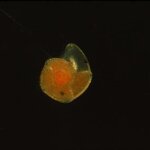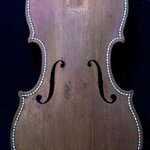Technology

Some people are worried that unthinking, uncaring robots will be part of our future. They are concerned about a Cylon uprising or maybe a Terminator, but that is unlikely to happen any time soon; there hasn't been a true advancement in artificial intelligence since the early 1990s, all we know is that the brain is a lot more complicated than making faster CPUs, regardless of what Ray Kurzweil sells to the public in books (and now from a nice gig at Google also).
So robots intelligent enough to really have an impact on our lives are not coming any time soon, but that's okay, we aren't…

Researchers using ‘metagenomics’, the open-ended sequencing of DNA from samples without the need for culture or target-specific amplification or enrichment, have recovered tuberculosis (TB) genomes from the lung tissue of a 215-year old mummy using a technique known as metagenomics.
Metagenomics avoids the complex and unreliable workflows associated with culture of bacteria or amplification of DNA and benefits from the throughput and ease of use of modern sequencing approaches. The researchers sought to use the technique to identify TB DNA in a historical specimen and the…

Oceans cover 70 percent of the earth's surface and compared to terrestrial ecosystems, the animal and plant species concealed under water have been researched relatively little.
An international collaborative project recorded the times, places and concentrations of oceanic plankton occurrences worldwide and the data have been collected in a global atlas that covers organisms from bacteria to krill.
To date, very little is known about the distribution of plankton – those organisms that are too small to swim against the ocean currents. In a large-scale project coordinated by researchers…
Heart tissue sustains irreparable damage in the wake of a heart attack but because cells in the heart cannot multiply and the cardiac muscle contains few stem cells, the tissue is unable to repair itself — it becomes fibrotic and cannot contract properly.
The search is on for innovative methods to restore heart function and so scientists have been exploring cardiac "patches" that could be transplanted into the body to replace damaged heart tissue.
To meet one of the biggest challenges in the development of cardiac patches — ensuring that engineered tissue can mimic the heart's…
An “intelligent knife”, dubbed the iKnife (naturally) can tell surgeons whether the tissue they are cutting is cancerous or not.
In operating room situations, the iKnife diagnosed tissue samples from 91 patients with 100 percent accuracy, saving about 30 minutes of time that would usually be needed for laboratory tests.
In cancers involving solid tumors, removal of the cancer in surgery is generally the best hope for treatment. The surgeon normally takes out the tumor with a margin of healthy tissue. However, it is often impossible to tell by sight which tissue is cancerous. One in five…
A saying in the Old West was that God made men, but Sam Colt made them equal.
Well, not completely equal, but his invention of the revolver certainly made life better for flintlock pistol owners. Speed and accuracy were still a subjective issue.
Now, maybe even accuracy is going to be egalitarian.
When I was a young man at Duquesne, we had a rifle team. In the NCAA then, if you were going to have a popular Division I sport that offered scholarships (such as basketball) you had to offer multiple smaller (less popular) Division I sports also - with scholarships, though obviously not full…

A group at the Bristol Robotics Laboratory have developed a novel way of charging mobile phones - using urine as the power source to generate electricity.
Lead author Dr. Ioannis Ieropoulos from
the University of the West of England
is an expert at harnessing power from unusual sources using microbial fuel cells and says, “We are very excited as this is a world first, no-one has harnessed power from urine to do this so it's an exciting discovery. Using the ultimate waste product as a source of power to produce electricity is about as eco as it gets.”
Basically, the microbial fuel cells…

If you have ever used a GPS system to find a route to somewhere, you might have wondered on occasion how they can be so wrong - though it's often not the signal itself that is wrong.
Yet sometimes a distorted signal can be a good thing. By figuring out how messed up GPS satellite signals get when bouncing around in a storm, researchers have found a way to do something completely outside their original intent: measure and map the wind speeds of hurricanes.
Improved wind speed measurements could help meteorologists better predict the severity of storms and where they might be headed, said…

MicroAire has entered the Biologics market with the launch of the StromaCell mechanical cell-separation device, which is is designed to prepare an autologous nucleated cell concentrate from a sample of adipose tissue, or fat, at the patient's point of care.
The StromaCell's closed-system design uses centrifugation to concentrate a stromal-vascular fraction from adipose tissue, for which there are numerous applications.
The StromaCell has multiple chambers designed to isolate the dense nucleated cells through centrifugation, a technique that has been used for decades, however, the StromaCell…

Antonio Stradivari is universally recognized as the most famous violin maker in the world - if people can name one violin, it is his. During his life, he and his apprentices built more than a thousand violins, violas, cellos and other stringed instruments. The importance of Stradivari's work obviously lies in the craftsmanship, the quality of the materials used and the finishes on the instruments' surfaces. The sound of a violin is a result of the combination of the materials used e.g. wood species and varnishes, the construction technique and the skill of the maker.
So scientists have sought…